Perfidious Eldar! Of all the factions in the game, none of them seem to get more “special unique snowflake” exceptions to the rules than the space elfs do. If you’re going to face them, it’s best to be familiar with their tricks; read on to learn about their sundry wargear and equipment, or check out the Tactics Corner for more reviews and strategies.
Overview
Eldar weaponry tends to specialize in a couple areas- they excel at generating lots of S6 shots at medium ranges and at dealing with heavily-armored targets (either by virtue of armor save or armor value); between the two, this gives them excellent options at dealing with lots of types of enemy units. However, they generally lack many shooting options outside of 36″, meaning that it is possible to strand them outside of range of their guns, even with their exceptional maneuverability. Many of their weapons similarly have shorter ranges than their Imperial counterparts- their basic troop gun is 12″/18″ rather than 24″, their heavy weapons are 24″ or 36″, etc, etc.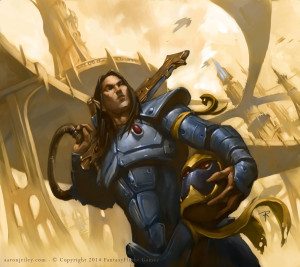
Common Guns
Shuriken Weapons are one of the defining parts of the Eldar army these days- their basic guns are generally short-ranged, but the Bladestorm rule effectively gives them Rending against non-vehicle targets, which makes them deadly to monstrous creatures and heavy infantry. The random aspect of it can work to your advantage in many cases, forcing enemies into difficult decisions about Jinking or using special abilities, and the respectable-to-good number of shots means even against basic infantry they can do work. Shuriken weapons are universally AP5 naturally, letting them cut up Guardsmen when necessary.
Distortion weapons, however, are where a lot of the fear comes from- all of them are Strength D attacks, albeit sometimes with restrictions or penalties. They are typically pretty short-ranged (12″ for the Wraithcannon, for example, or template for the D-Scythe) but with universal AP2 and the “don’t give a shit about your stats” nature of the Destroyer table they can make short work of most targets. The area-effect versions typically subtract -1 from rolls on the table and only count as S4 for Instant Death, unlike their scarier cousins, but even so they should not be undersestimated- “just” doing d3 wounds at a time will still shred most multiwound models in short order. They are most devastating when applied to hard targets like monstrous creatures, vehicles, and characters where their effect of bypassing stats can get the most mileage.
Monofilament weapons are another category of weapons that work outside the normal Strength vs. Toughness paradigm of the game; though they have Strength values just like normal, they compare it to Initiative when attempting to wound enemy models (though not for determining Instant Death.) Additionally, they will Rend in the same fashion as Shurken weapons will, allowing them to not only pile on large numbers of wounds to targets (since they are all S6 or higher, meaning they wound almost everything on 2s) but also threaten units with strong armor saves as well.
Eldar also have several iconic weapons in the other types, though even within the same category their statlines tend to vary widely. The Bright Lance is the prototypical Lance weapon in the game and was a common sight in editions past, though it is not nearly so common now due to changes in the game’s base rules. However, against AV13+ targets it is still a pretty dangerous gun and has gotten a lot cheaper this time around, making it a more viable choice on troop squads or heavy weapon carriers. The Scatter Laser is also extremely common across the army, with four S6 shots going out to 36″ to pepper enemy infantry and light vehicles; it lost the ability to give other weapons rerolls, but is still an excellent option in most cases.
Common Melee Weapons
Eldar actually have very few unique melee weapons to their name- where the Imperium sets the standard with Power Fists, Power Mauls, etc, etc, the Eldar really only have one weapon of note that is shared across nearly all of their characters- the Witchblade. With Fleshbane and Armorbane but no AP value to speak of, the Witchblade is capable of hurting anything in the game but can sometimes struggle to do so. It is featured on all of their psykers (both HQs and squad-level versions) and gives them some interesting capabilities at times, but at the end of the day is generally worse than the customizable Force weapon that Imperial equivalents can get. For 5pts it can be swapped into a Singing Spear, which is identical in melee but can also be thrown up to 12″ as a S9 AP- shot; the contrast between this and the melee profile is a bit weird, but it’s not a horrible buy as it can do some serious damage to vehicles and if you get luck pulp an enemy character. Note that neither version has the Force rule- only one named character (Eldrad) gets a weapon with Force.
Apart from their psykers, Eldar squad leaders typically get access to Power Swords in some variety or another- unlike most other factions, Eldar are not allowed to pick the other Power Weapon type (Axe, Maul, Lance) in most cases and are thus very limited in their access to AP2 weapons. This isn’t universal, as there are several notable units that have AP2 weapons available (or have AP2 naturally), but as a rule they tend to have much less flexible melee options than many others get.
Armor and Protection
Eldar have perhaps the most varied armor values in the game; everything from no save down to 2+ can be found across their codex in various places, depending on the unit, and there is very little correspondence between the unit’s role and what sort of armor it ends up with. Their line troops wear shoddy 5+ armor that can easily be cut apart by nearly anything, but Aspect Warriors all earn at least a 4+ save for their points cost (thankfully) and many of them actually sport 3+ armor- though with only Toughness 3 they still end up taking a lot of wounds from the enemy’s basic weapons. All units on a jetbike also have 3+ armor, making it doubly a good buy for their characters in most all cases. 2+ armor is reserved for their named heroes, as it is not available as an upgrade anywhere. Their psyker characters are the most unusual, since their “armor” does not actually provide any armor save at all but instead gives them a 4+ invulnerable save, an interesting tradeoff when compared to Imperial psykers and their lack of any invulnerable save access at all in most cases.
Vehicle Wargear
Eldar vehicle equipment differs greatly from most races’ counterparts, although parallels can be drawn with many of the Tau and Necron pieces. As their vehicles typically have only middling stats to start with, many of their upgrades can provide significant increases in functionality- albeit at a cost. Unlike in previous editions, none of them can really be considered “must-have” upgrades, although their are several that are sufficiently general-use that you will see them across many different chassis.
Holofields provide the vehicle with a 5++ save now, rather than improving cover saves. This is generally going to be worse than before, since a 5+ is simply not very reliable and the difference between a 4+ and a 3+ when Jinking was critical. It does give you the option to not Jink with the vehicle and rely on your automatic save to protect you, but in terms of raw survivability it will usually lose out, except against Ignores Cover weapons obviously. Holofields do not function when Immobilized, though that’s a minor concern.
The Ghostwalk Matrix gives the vehicle Move Through Cover, allowing it to freely move into terrain without heed for the dice. It’s superior to Dozer Blades in that respect, though you pay a slightly higher price as a result. Since Skimmers are able to hop over many pieces of terrain without need to actually land in them, it’s perhaps not as useful as it might otherwise be- however, with Eldar vehicles as expensive as they are and as reliant on mobility to protect them, it can be a solid investment in many cases (especially for vehicles designed to deliver short-range units like Wraithguard or Fire Dragons.) Similarly, Spirit Stones easily outclass their Imperial equivalent, giving you a 2+ roll to negate Shaken entirely and a 4+ roll to negate Stunned. This can be a very useful way to keep a vehicle shooting despite damage going through and is especially valuable to the Fire Prism/Night Spinner, who are unable to make Snap Shots, but it still ends up being a bit questionable simply due to the cumulative cost of adding many upgrades to a vehicle.
Star Engines allow a vehicle to Flat Out an extra 6″; this would be marginal as a 5pt upgrade (how often do your Fast Skimmers really need to move 36″ in a turn rather than 30″?), but at 10pts there is little reason to ever bother with it- though it’s worth noting that the ubiquitous Hornet gets it for free. Vectored Engines instead allow you to make a free pivot after shooting with the unit; this would be really great for transports, allowing them to make best use of the rear hatch to deploy troops and then spin to avoid leaving themselves vulnerable. Unfortunately, the rules for disembarking units specifically prohibit moving with a vehicle after a unit has gotten out of it, so this trick doesn’t work.
Lastly, the Crystal Targeting Matrix allows a once-per-game opportunity to shoot with a single weapon (at full Ballistic Skill) after the vehicle has made a Flat Out move. With many of their gun-tanks mounting only a single upscaled gun, this can actually be quite useful- however, the 25pt price tag is rather offputting. It’s an upgrade worth considering, since it allows you to pull shenanigans that the opponent otherwise wouldn’t expect, but it’s not one I personally end up taking very often.
Remnants of Glory
The Eldar relic selection is very similar to what it was in 6E, like many parts of the book, with one notable exception- the Mantle of the Laughing God is gone. I’m quite sad about this, because I liked the Mantle a lot and had converted a couple characters to make use of it, but it’s somewhat understandable- 2+ rerollable saves are crazy-hard to deal with. However, I think it would’ve been very possible to make a toned-down version of it that was more acceptable for common play without being totally worthless- however, at this point it’s a missed opportunity.
Kurnous’s Bow replaces the Mantle in the lineup, and it’s nothing to write home about. A S4 AP3 pistol with Rending for 10pts, it stands a good chance of doing a wound to something if you get to shoot it- however, psykers will rarely want to be so close that they can use it and the Autarch can pay 5pts more for a Fusion Pistol, which hits a lot harder and doesn’t eat your relic slot. It’s pretty resoundingly mediocre.
Shard of Anaris is a bit niche, but is generally a pretty good upgrade when you want it. At 40pts it’s expensive as heck, but for that you get a +2Str melee weapon that gives you Fearless and Rending. Additionally, when in a challenge it has the Fleshbane and Instant Death rules, making for a serious threat to most enemies, albeit an unreliable one. The Shard is typically taken to give Fearless to a key unit (like a Seer Council), as the difference between “usually pass morale” and “always pass morale” can be a very clutch one in some circumstances- you don’t want to let the dice screw over your 700pt deathstar if you can avoid it.
The Uldanoreth Long Rifle is a very cool piece of gear, but not a very worthwhile one. It comes in at the middle of the pack at 25pts and has a 120″ range (!), but is otherwise just an AP3 Sniper weapon with a single shot. Though it cuts through armor, it does nothing for cover nor for the 50% chance to fail its to-wound roll, so unfortunately even when you are getting to shoot it it simply won’t do very much. I ran one for a score of games in our Escalation League and did not ever have it even manage to kill a model the entire time, which was rather sad.

Faolchu’s Wing was previously overshadowed rather heavily by the Mantle; it’s still not amazing, but it has some interesting uses. It gives the model a 48″ Run move so long as they don’t shoot or use psychic powers that turn and allows you to reroll failed cover saves when doing so- in effect, it makes you into an Eldar Jetbike but even faster in a lot of ways. However, not being able to work with Battle Focus is very unfortunate and not being able to cast powers at all is a pretty crippling disadvantage. For 30pts it seems to have an awful lot of restrictions.
The Firesabre is… just very lackluster. At 30pts it costs as much as any other relic weapon usually does, but it ends up merely a generic Power Sword in most cases (S4 AP3) with Soul Blaze tagged on. The Soul Blaze will “echo” to other units within 6″ if it manages to do a wound, but that’s such an unreliable thing that it’s hard to imagine that it is worth the 15pt premium. Cool idea, awful execution.
The Phoenix Gem is one I’ve seen used a few times in the past, though it is often a bit awkward. When the model carrying it dies they explode in a S4 AP5 large blast, hitting all models friend or enemy- if any of them are killed by the explosion, the bearer of the Gem comes back with a single wound- a nice way to avoid giving up Warlord as easily. However, it only works the first time you die and only then on a 2+ die roll- a rather needless bit of randomness on an already-random item. A lot of time your character is going to bite it to enemy shooting, meaning the explosion will (at best) kill some more of your own guys for free and then your warlord will still get punked out anyways. If you can get into close combat, it’s actually quite dangerous with everyone all clustered together, but since you no longer can rely on the Mantle to help deliver you to the enemy, it’s dicey.
The final entry on the list is the big one- the Spirit Stone of Anath’lan. At 15pts it is pretty cheap and it lets a psyker trade their invuln save for -1 warp charge cost on all spells for the remainder of the turn, which can help you get a LOT more spells off in many circumstances. Runes of Fate, Divination, and Telepathy all have multiple WC2 spells (Fate in particular is full of them, with five spells WC2 or higher) and dropping that down can hugely boost your psychic output. The cost of losing your save for a turn is pretty minimal, since typically you’re in a squad anyways and can Jink if you really need to avoid some damage.
Thoughts? Additions? Conditions? Seditions? Post ’em below in the comments section, and remember that all GW models are available for up to 25% off in the Frontline Gaming store.

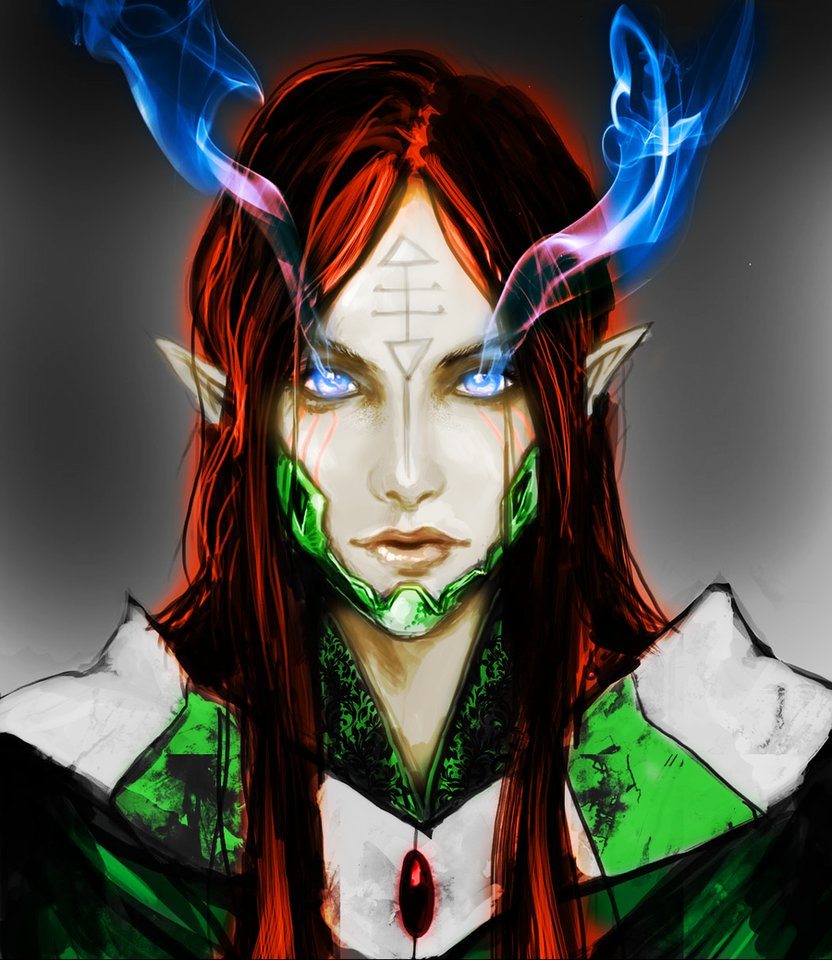
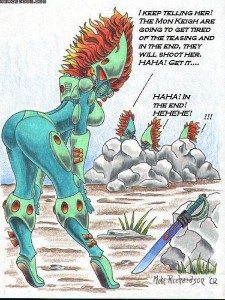
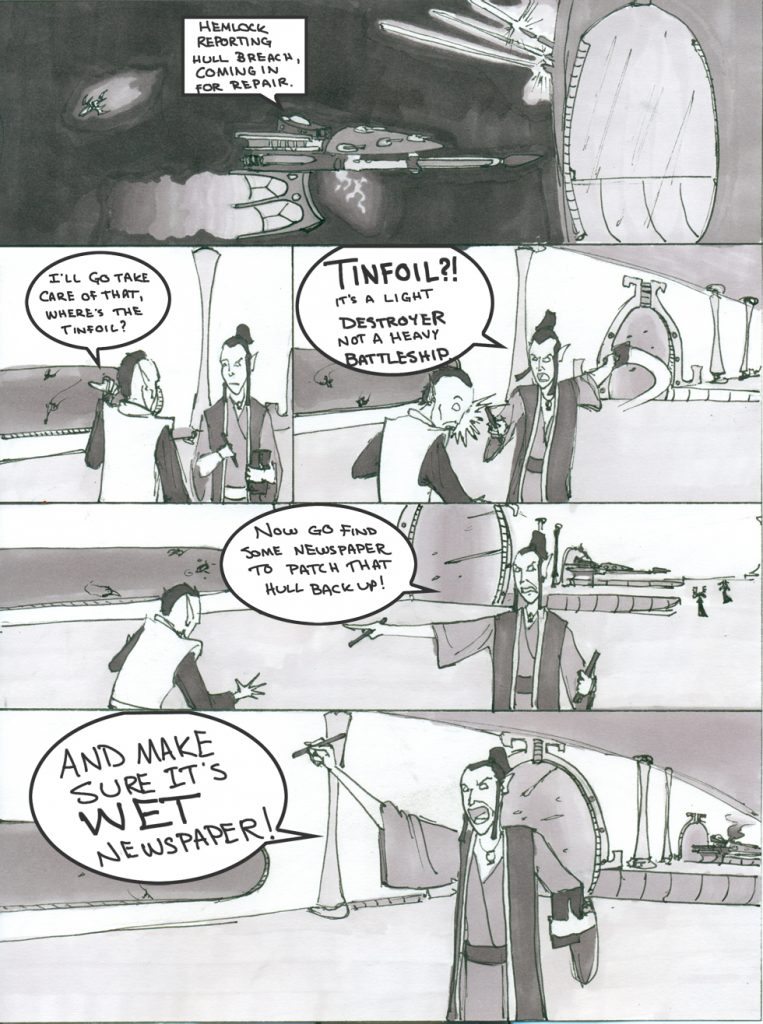
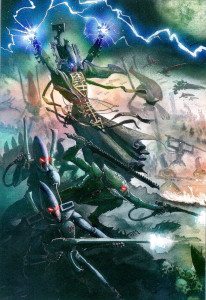
Regarding the vectored engines, I do not think pivoting is considered movement (see BRB page 73 vehicles in the movement phase, the paragraph after cruising speed). .
The actual text is “a vehicle that only pivots in the movement phase counts as stationary (however, Immobilized vehicles cannot even pivot on the spot.)”
This tells us two things- one, that pivoting is a kind of movement (because otherwise the exception would make no sense.) Two, that the exception ONLY applies to movement made during the movement phase- which Vectored Engines are not.
It also says, “Vehicles turn by pivoting on the spot about their center point, rather than wheeling around. Pivoting on the spot alone does not counted as moving, so a vehicle that only pivots …”
To me the second sentence first clause states that any pivoting is not movement, I guess it is how you read alone, I do not read it as meaning the only action I read it as mean pivot (any) does not count as movement.
Whops accidentally submitted. To address your points, I think that the rule specifically says that pivoting it is not moving, so not movement. Also I do not think it only applies to the movement phase, I think the second part of the sentence starting Pivoting on the spot..is included in the sentence to help clarify a situation regarding the first clause. What you think is an exception, I think is a clarification (based n the word “so” preceding the explanation) cause by the wonky vehicle firing rules (they have relentless but can only fire a certain number of weapons at full ballistic skill based on how far they moved, basically telling you that pivoting is not moving). Next, the word “even” in the parenthesis regarding immobilized vehicles seems to indicate that immobilized vehicles cannot even pivot which creates a separation between pivoting and moving (as immobilized vehicles already cannot move). To me this indicates that pivoting is not movement.
Two, yeah so? The first clause pivoting does not count as moving does not have an exception attached.
Pivoting _is_ movement, though- you certainly wouldn’t allow your opponent to just randomly pivot their vehicles whenever they felt like it. The exception notes that pivoting does not count as movement _for certain kinds of purposes_, although it still does for others. A vehicle that disembarks passengers can NOT then pivot afterwards in the movement phase, because that pivot is still a type of movement- and, it likewise cannot pivot in the shooting phase, even with the use of Vectored Engines.
>Next, the word “even” in the parenthesis regarding immobilized vehicles seems to indicate that immobilized vehicles cannot even pivot which creates a separation between pivoting and moving (as immobilized vehicles already cannot move).
I would interpret this the other way around- it comes directly after the clause that says “pivoting alone does not count as movement,” so it is rather an indication that while pivoting movement does not count as moving for SOME kinds of restrictions (such as when firing weapons), it still counts for others (such as for being Immobilized.)
Vehicles can ONLY make a pivot as part of a movement action. Vehicles that can’t take movement actions (are Stunned, Immobilized, etc) cannot pivot. Pivoting, by all indications, seems to be a particular type of movement with some special rules attached.
There’s also the fact that codex>brb in any rules dispute. The codex tells us we can pivot in the shooting phase so anything in the brb that says otherwise is overruled.
Codex only trumps rulebook when it specifically overrides the rulebook- to take a similar example, Star Engines allow you to move an additional 6″ when going Flat Out… but they don’t allow you to move Flat Out when you otherwise couldn’t, such as in a turn when models disembarked. Neither they nor Vectored Engines have any indication they override the usual rules for disembarking models, which is why I don’t think they work in that situation.
Well, the transport rules in the brb specifically tell us that a vehicle may not move (including pivoting) after passengers embark/disembark if it had already moved beforehand. This will of have taken place in the movement phase.
The codex specifically tells us that the vehicle may pivot after making a shooting attack, which will be in the shooting phase, ie after the movement phase.
So one rule tells us we cannot pivot and another tells us we can.This is a conflict and therefore the codex rule always takes precedence.
That’s not quite correct. In this case, the codex gives us a specific exception (you can pivot after firing) to the normal rules, giving us a free action. However, it does NOT exempt us from the other rules of pivoting and movement- we must still pivot around the vehicle’s center point, just as normal, we must still stay 1″ from enemy models, just as normal, and we still cannot make any movements after disembarking passengers, just as normal.
Vectored Engines give us permission to break ONE rule, not every rule. As Vectored Engines make no mention of the rules for disembarking, not even by implication, we have no reason to think that we shouldn’t obey them as usual, just as we obey all the other rules of movement.